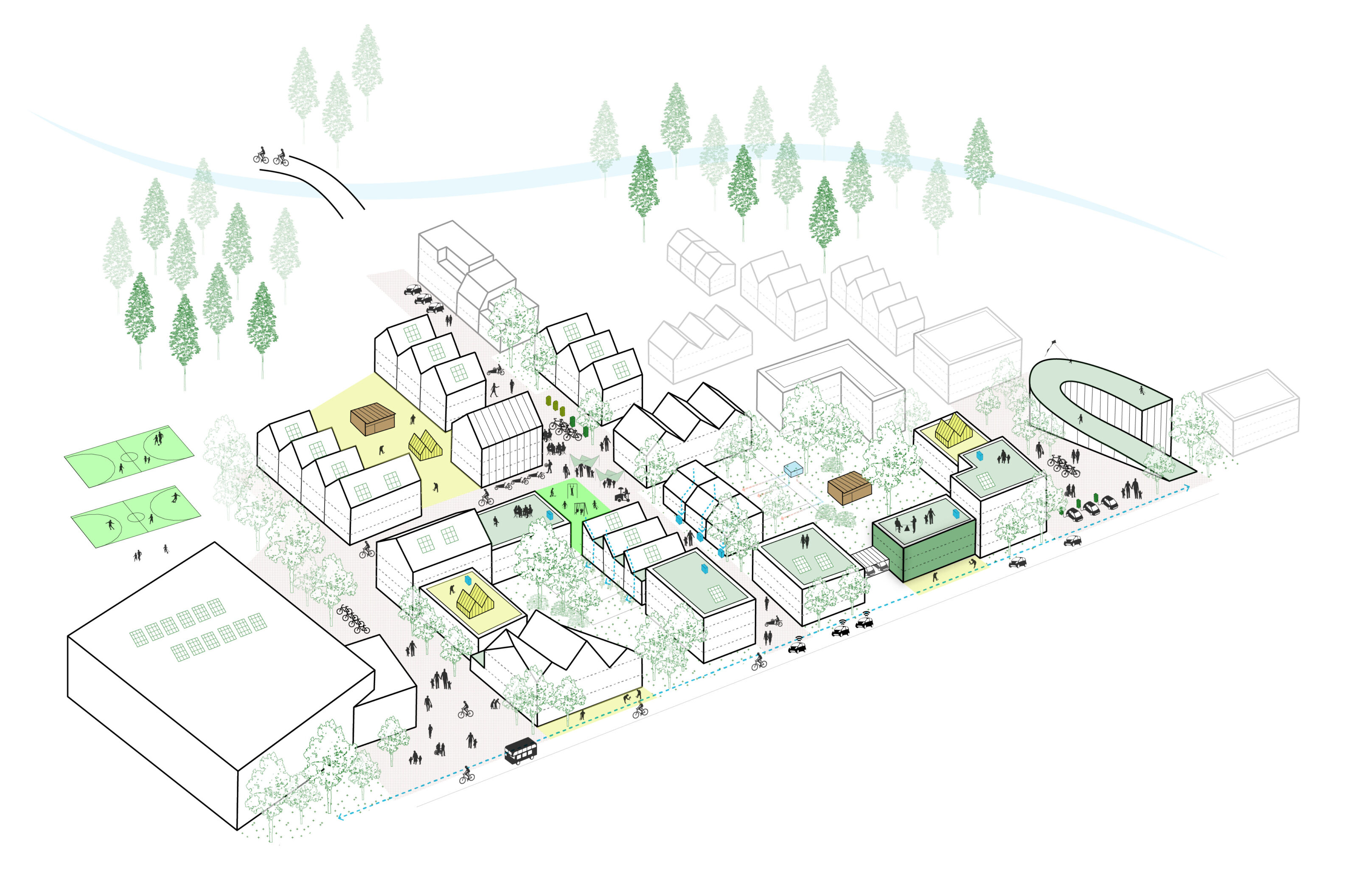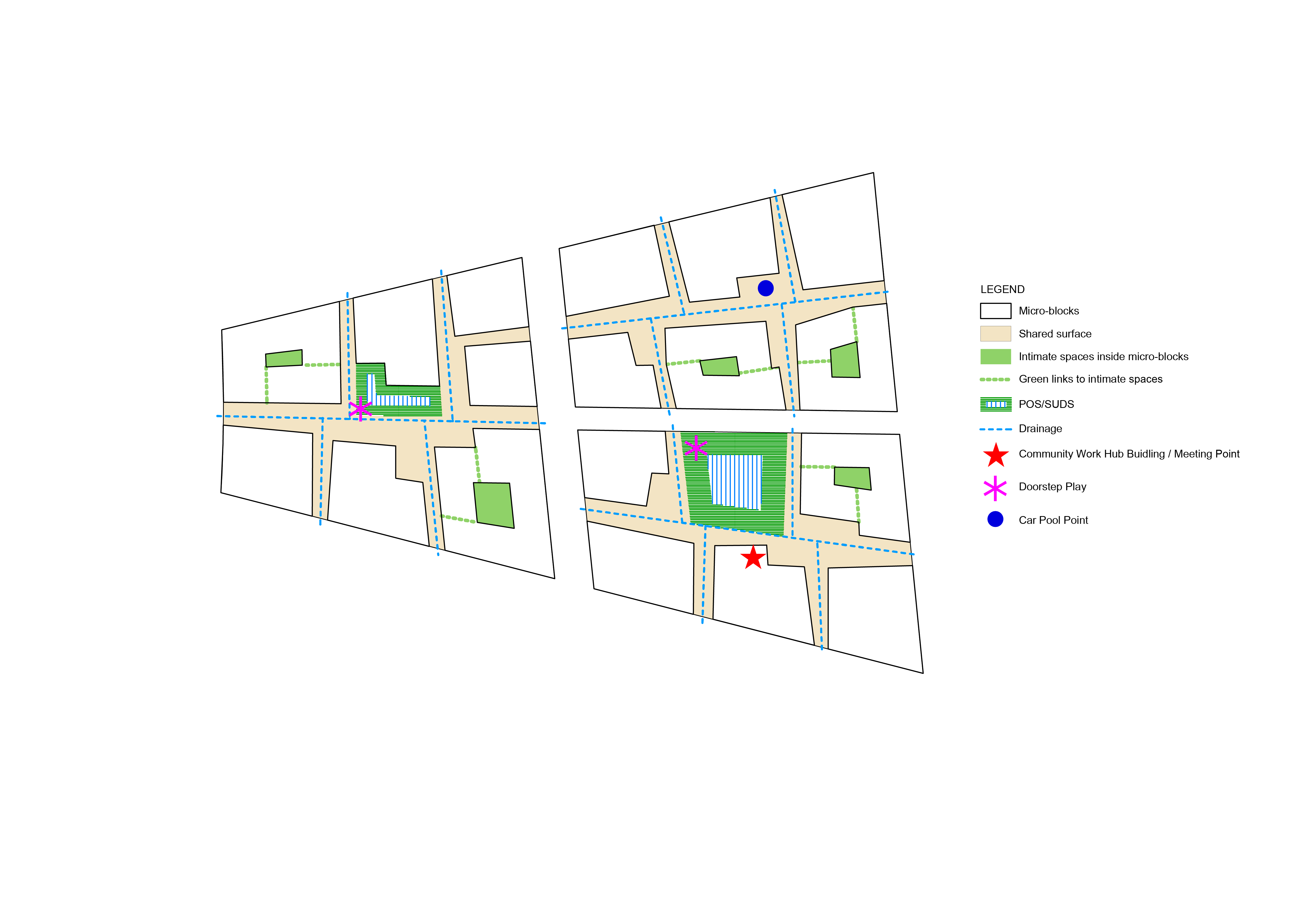How much space could be freed up if people owned less cars and used sustainable transport? What if we, as urban designers, had to worry less about cars and parking and focused more on actual placemaking when designing new neighbourhoods? How could the reduction in car ownership contribute to the creative use of space and reinforce the sense of community and wellbeing in the heart of a neighbourhood block? What are some of the key neighbourhood facilities that could be located in the heart of a residential superblock, within walking distance? What would the role of a Community Trust be in managing the space and bringing together the residents? What if the sense of intimacy in these lively, people friendly spaces encouraged more and more people to shift their mentality towards active travel?

Those were a few fundamental questions behind this design exercise that was done as part of the Culham Science Village masterplan evolution and investigates the superblock model as alternative structural element to the conventional block. Inspired by a few successful precedents that we had the chance to visit during several office study trips, such as the superblocks in Barcelona and the Bo01 Neighbourhood in Malmo, the idea here is to explore how micro blocks can work together at a macro level, creating intimate, people friendly places in their heart. It is also about investigating the creative use and gradual repurposing of streets and spaces and how that can foster the sense of community at the neighbourhood scale. The aim is to keep as much as possible the vehicular movement (cars, refuse vehicles, fire access) to the perimeter of the superblock, with only neighbours allowed access and parking in the core of the block which is deliberately more organic in its design, to allow for incidental spaces. Different scenarios are explored, with space freed up by the gradual reduction in car ownership used for drainage, biodiversity, grow zones, play, community events, bike sharing etc. Those combined with key community facilities, such as home work hub, cafe, creche and car club are expected to encourage social interaction in the internal streets and spaces.

As any innovative concept the superblock model entails a few challenges that we need to respond to. How can the superblocks compliment each other and work together into cohesive neighbourhoods without their residents being isolated or restricted within the extent of their block? How can car presence and traffic be limited and controlled in the perimeter of the superblock? A few interesting points to reflect on..







